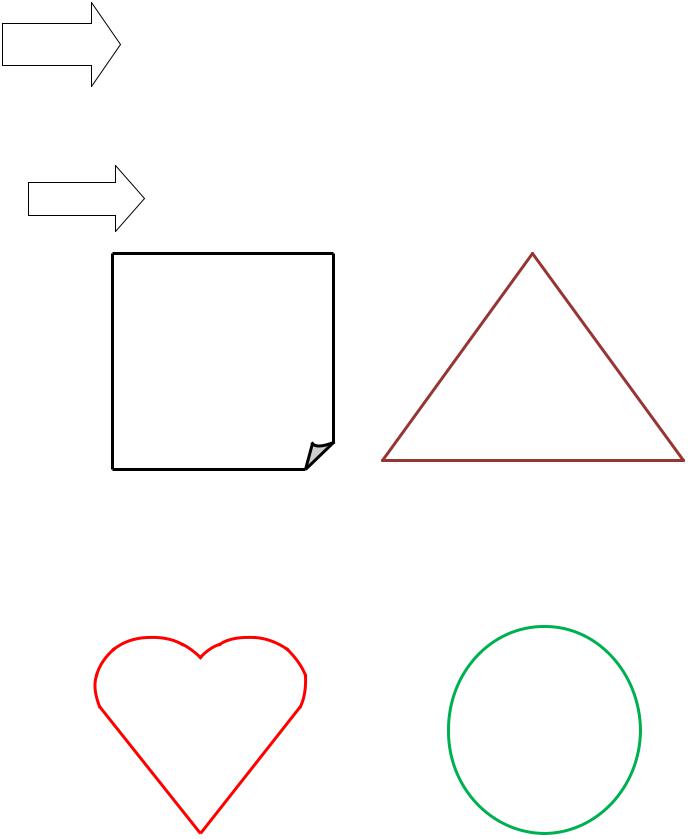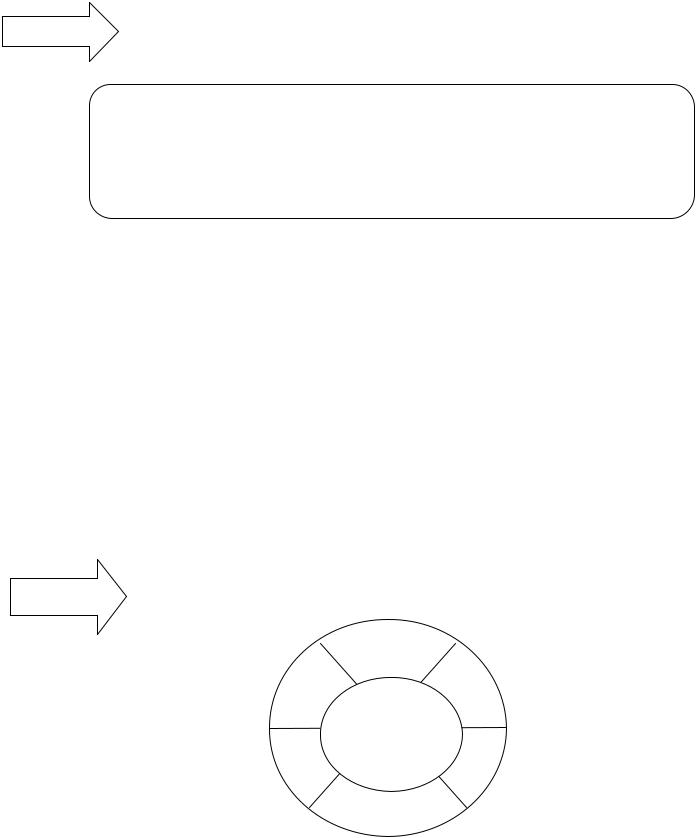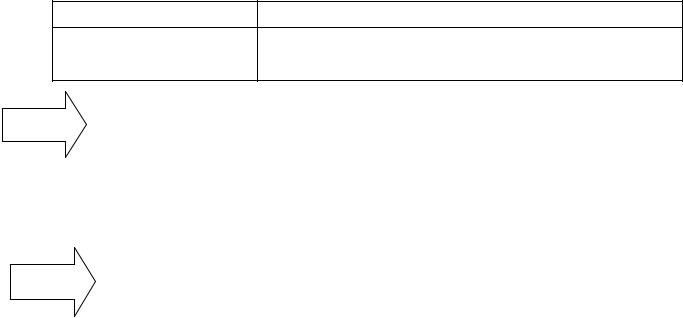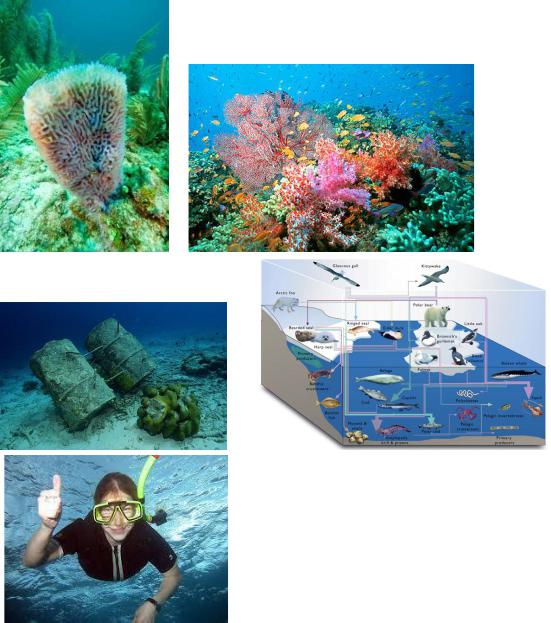
книги / First steps in biotechnology. ╨Я╨╡╤А╨▓╤Л╨╡ ╤И╨░╨│╨╕ ╨▓ ╨▒╨╕╨╛╤В╨╡╤Е╨╜╨╛╨╗╨╛╨│╨╕╨╕
.pdf
Evaluation criteria for essay writing.
|
4 |
3 |
2 |
1 |
|
Expert |
Accomplished |
Capable |
Beginner |
Quality |
Piece was |
Piece was |
Piece had lit- |
Piece had no |
of writing |
written in an |
written in an |
tle style and |
style or voice. |
|
extraordinary |
interesting |
voice. Gives |
Gives no new |
|
style and |
style and |
some new in- |
information |
|
voice. Very in- |
voice. Some- |
formation but |
and very poor- |
|
formative and |
what informa- |
poorly orga- |
ly organized. |
|
well orga- |
tive and orga- |
nized. |
|
|
nized. |
nized. |
|
|
Grammar, |
Virtually no |
Few spelling, |
A number of |
So many |
Usage & Me- |
spelling, punc- |
punctuation |
spelling, punc- |
spelling, punc- |
chanics |
tuation or |
errors, minor |
tuation or |
tuation or |
|
grammatical |
grammatical |
grammatical |
grammatical |
|
errors. |
errors. |
errors. |
errors that it |
|
|
|
|
interferes the |
|
|
|
|
meaning. |
Total scores: |
|
|
|
|
|
|
|
|
|
PREPARING TO WATCH
1. You are going to watch the video produced by Science Nation Company. Answer the question: How are the pictures (Fig. 23) below related to each other?
Fig. 23
Predict
2. Work in pairs, discuss your ideas about the pictures with your partner. Complete the prediction stars (Fig. 24) below.
71

From looking at picture 1 I predict the video will be about
__________________________
__________________________
From looking at picture 3 I predict the video will be about
_____________________
_____________________
From looking at picture 2 I predict the video will be about
____________________
____________________
Understanding key vocabularies
Fig. 24
3. Match the words to the correct definition.
Tip: use if necessary www.dictionary.com
Make inferences
breed |
a joining edges of a wound or the like by stitching or |
|
some similar process. |
fibers |
treatment, as an operation, performed by a surgeon. |
ligament |
to understand; solve. |
sutures |
to sort, part, divide, or disperse (an assemblage, mass, |
|
compound, etc.), as into individual units, components, |
|
or elements. |
surgery |
to tend or round up. |
figure out |
a fine, threadlike piece, as of cotton, jute, or asbestos. |
lactate |
a band of tissue, usually white and fibrous, serving to |
|
connect bones, hold organs in place, etc. |
wrangle |
to produce milk. |
separate |
a relatively homogenous group of animals within |
|
species, developed and maintained by humans. |
4. Watch the video “Got silk?” http://www.nsf.gov/news/special_reports/science_nation/spidersilk.jsp
for the first minute without sound. Using your ideas from exercise 1 guess what the presenter is saying.
5. Watch again with sound. Were your ideas correct?
72

Understanding
details
6. Read the questions below. Can you remember the answers?
1 Why spider’s fibers are very interesting?
2 What medical uses of such fibers exist?
3 Why do not spider farms work?
4 What way of spider’s fibers production has Randy Lewis figured out?
5 What plant does Lewis introduce the silk gene in?
Evaluate
POST-WATCHING
7. Think back over the video. Write in the shapes (Fig.25) below.
I agree …
The most important thing I have learned is …
What did you agree with?
What did you already know?
What squares with your thinking?
What is the most important thing you’ve learned?
What’s at the top of your head?
I feel … |
I am still |
|
wondering … |
How do you feel about the thing |
What questions do you still |
|
have? |
you’ve learned? |
|
How do you feel about the learning? |
What’s going around inside your |
|
head? |
|
Fig. 25 |
73

DISCUSSION
8. Imagine in what industries spider fibers can be applied else? Share your ideas with the other group mates.
PREPARING TO LISTEN
1. You are going to listen to “Tips for your First Job Interview: Difficult
Relate Questions”. Before you do, discuss in pairs with your partner which jobs below are not connected with agricultural biotechnology.
|
|
Accountant |
|
Animal Technician |
|
|
|
||
|
Desktop Publisher |
Greenhouse or Field Technician |
||
|
|
|
|
|
|
|
Researcher |
Electrical Engineer |
|
2.Match the agricultural biotech jobs from exercise 1 with its descriptions:
1 takes care of the laboratory animals that are used in biotechnology research, veterinary research, and product testing. Laboratory animals play an important role in helping scientists understand how drugs behave in a biological system.
2 cares for plants that have been created through genetic engineering and have to understand how to plant seeds, pollinate flowers, water and weed plant beds, plant rooted plants, nuture root cuttings, treat plants for disease and pest infestation, and be able to use a computer for documentation purposes.
3 investigates both plant and animal life at the molecular level to understand their place in nature.
Predict
3. Work in pairs. Discuss what the questions interviewers like to ask are. Add your ideas to the idea wheel (Fig. 26).
Job interview questions
Fig. 26
74

WHILE LISTENING
4. Listen to the podcast and check your ideas to exercise3. http://hwcdn.libsyn.com/p/e/d/3/ed361f5f3a9068c5/BE360.041st_Interview_Difficult_Questions.mp3?c_id=2101547&expiration =1448183708&hwt=b4dbe952d6784b70468ee4180a7a6d45
Understanding
details
Create
5. Listen again and circle the correct answer.
1 You don’t need/ need to spend time preparing for your interview and crafting good answers to the questions you’re going to face.
2 You need/ needn’t to be brief, crisp, and relevant, and everything you say should relate to the job or your career objectives.
3 Describe yourself in three to five sentences, mentioning your key strengths, your most recent related experience, and your basic personal / professional goals.
4 First / Second impressions are important, so you’d be wise to develop a good answer and rehearse it
5 You should / shouldn’t state a true weakness and then explain how you have tried to overcome it.
6 That conflict is normal and natural / abnormal and unnatural.
7 Show how you tried to understand the origin / the root of the conflict and how you dealt with that directly.
8 You must be able to sell / to buy yourself and explain why you are right for the job.
9 You should / shouldn’t also avoid talking about opening your own business or going back to school.
DISCUSSION
6.Work in pairs. Discuss the following questions with your partner / the group.
1 What types of interview questions do you think are very difficult?
2 Is it ever okay to say “I don’t know” in response to an interview question?
3 How would you describe yourself in one sentence? 4 What advices could be useful to a job seeker?
7.Write a list of interview questions and possible answers. Discuss
them in the group.
75

Interview questions |
Possible answers |
1 |
1 |
2 |
2 |
3 |
3 |
4 |
4 |
5 |
5 |
6 |
6 |
7 |
7 |
CRITICAL THINKING
At the end of this unit you are going to do the speaking task below. Use a cluster diagram to organize your thoughts around a central idea.
1. Choose one job from exercise 1 Listening or think your own and write
Analyze |
the job title in the middle of the cluster diagram (Fig. 27). |
||
|
|||
|
|
|
|
|
qualifications |
|
experience |
|
|
job |
|
|
|
|
|
|
characteristics |
|
other things |
|
|
|
|
Fig. 27
2.Work in pairs. Take it turns to look at the job you choose. Discuss the qualities you need to do the job. Make notes in each category in the
cluster diagram.
TIP: use if necessary http://biotech-careers.org/job-areas/agricultural-biotechnology
3.Write some interview questions to find out if someone has the right qualities for the job you chose in exercise 1 in the table. Use the questions in exercise 7 Listening to help you.
job title
qualifications
experience
76

personal qualities
other things e.g. driving licence
Evaluate
Create
4. Work in pairs. Imagine your partner wants the job you chosen in exercise 1. Take it turns to be the interviewer and ask your partner the questions you wrote in exercise 3. Make a note of the partner’s answers.
5.Look back at the interview advice from Listening and at your notes. Decide if you will give your partner the job.
6.Imagine you are a mentor. Using the phrases below give advice to job seekers.
1 I can help you…
2 I think you should …
3 Be careful not to …
4 Why don’t you …?
5 If you want to do better, you should … 6 You should try (not) to …
7. Make a list of ten dos and don’ts of finding a job.
OBJECTIVESREVIEW
I can …
understand a video about spiders’ fibers biotechnological production.
write an essay.
listen for gist.
evaluate.
assess qualities for work using a cluster diagram.
Very well________Not very well
Very well________Not very well Very well_______Not very well Very well________Not very well Very well________Not very well
give advice. |
Very well________Not very well |
77
|
WORDLIST |
Animal Technician |
productivity |
breed |
Researcher |
fibers |
separate |
Field Technician |
surgery |
figure out |
sutures |
lactate |
tissue |
ligament |
wrangle |
molecular diagnostics |
yield |
molecular markers |
|
78

UNIT 7
MARINE (BLUE) BIOTECHNOLOGY
In this unit you will …
Listen / watch, read and talk about
marine biotechnology
its discoveries and successes
a new source of energy - algae
Learn how to …
write a respond to a video
make a research
to take turns in discussion
Activate your knowledge.
Marine (or blue) biotechnology encompasses the applications of biotechnology tools on marine recourses.
Real sea sponges are great for bathing and painting, but is their biotechnological application? Do you know?
The World Ocean provides the scientific community endless opportunities for exploration. Why is it so poorly investigated to your mind? What would you like to research?
PREPARING TO WATCH
1.Work in pairs. Answer the questions?
1 Have you ever been at the seaside or visited the ocean?
2 What feelings do you have when you imagine a day at the seaside?
3 Have you ever thought what potential oceans and seas have from biotechnological point of view?
2.Match the words (1-5) to the photographs (a-e).
Understanding key vocabulary
79

1 |
2 |
3 |
4 |
5 |
|
|
Fig. 28 |
|
a) aquatic ecosystems |
b) sponge c) coral |
d) snorkel e) pollutant |
3. Match the words to the definitions |
|
|
1 scuba-diving |
a located near a coast |
|
2 ever expanding |
b declare the truth of |
|
3 fascinating |
c under the surface |
|
4 beneath the surface |
d of great interest or attraction |
|
5 estimate |
f assess, evaluate, calculate, measure |
|
6predator |
g constantly developing |
|
7 attest |
h set apart, detach or separate |
|
80
